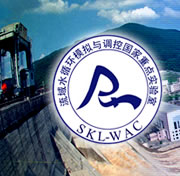《Journal of Engineering Mechanics》杂志刊登“设计高精度快速非线性大坝的神经建模以及与有限元分析的比较”
作 者:Abdolreza Joghataie, Mehrdad Shafiei Dizaji
刊 物:《Journal of Engineering Mechanics》,2012年11月21号
摘 要:本文利用人工神经网络(ANN)提出了一种建立在地震荷载作用下具有非线性滞后反应的混凝土重力坝模型的方法。这种方法的主要优点是其可以针对基于监测数据的特定坝设计一种分析工具;因此这种分析工具可认为比现有的分析软件计算的结果精度更高。这种方法更适合于分析强震作用下具有是非线性、滞后性响应的大坝。建模的神经网络被称为“神经建模”。另一方面,大坝设计的神经建模可以克服大坝在地震荷载下非线性分析耗时大的缺点,可在很短时间内得到精确结果。作为这个课题的第一项研究是选择一个分析软件被用来模拟这个实验,用这个软件来模拟的目的是为了给神经建模的培训和测试提供精确的可控的数据,从而可以估计这种方法的精确度。这项研究使用能够很好模拟混凝土重力坝的模型之一的弹塑性断裂模型和多层前馈神经网络(MLFFNNs)。这种方法的第一步是通过分析不同地震作用下的大坝来获得其线性和非线性响应的大量数据。第二步是基于收集的数据进行神经建模,来获得特定地震作用下大坝的非线性滞后响应。第三步是测试神经建模的精度和泛化能力,来确保神经建模可以用来分析一系列选定地震作用下大坝的不同特性,其中包括近场和远场激发条件下的特性。成功通过测试后,神经建模可以认为能为任何在给定地震作用下大坝的响应问题提供可靠、精确的结果。 本文精心的选取不同地方具有不同特征且都经历过地震大破坏的三座混凝土重力坝(Koyna, Pine Flat 和Sefid-rud 大坝)进行过的数值模拟是试验研究结果。并列出神经建模在这三座大坝上的成功测试结果。大坝的神经建模在其非线性滞后行为的数值模拟中能提供高精度的结果。
Designing High Precision Fast Nonlinear Dam Neuro-Modellers and Comparison with Finite Elements Analysis
Authors: Abdolreza Joghataie, Mehrdad Shafiei Dizaji
Journal: Journal of Engineering Mechanics, Published: 21 November 2012
Abstract: In this paper a method has been proposed to use artificial neural networks (ANNs) for the modelling of concrete gravity dams with nonlinear hysteretic response under earthquake loading. The main advantage of this method is that it makes it possible to design an analysis tool for a specific dam based on the data obtained from monitoring the dam; hence it is expected that the analysis tool could provide more precise results than available analysis software. This advantage is especially pronounced when the dam is to be analysed under strong earthquakes where its response is nonlinear and hysteretic. The modeller neural network has been called the “neuro-modeller”. On the other hand, noticing the nonlinear analysis of dams under earthquake loading requires considerable time, another advantage of designing neuro-modellers for dams is that they can give practically precise results about the response in a short time. As the first study on the subject, in order to prepare a controlled precise data for the training and testing of the neuro-modeller, so that the precision of the method could be evaluated, an analysis software was used to simulate the experiment. Smeared crack model, which has been one of the models used successfully in the literature to model concrete gravity dams, has been used in this study too. Multi-layer feed-forward neural networks (MLFFNNs) have been used. The first step in this method is to analyse the dam under study subjected to different earthquakes in order to collect large data about its linear and nonlinear response. The second step is to train a neuro-modeller, based on the collected data, to implicitely learn the nonlinear hysteretic response of the dam subjected to the training earthquakes. The third step is to test the precision and generalization capabilities of the neuro-modeller where the neuro-modeller is used to the analysis of the dam under a number of selected earthquakes of different properties including both near and far field excitations. After passing the tests successfully, the neuro-modeller is expected to be able to provide reliable and precise results about the reponse of the dam under any given earthquake. Three concrete gravity dams of different characteristics and in different geographical locations including Koyna, Pine Flat and Sefid-rud dams, which have been both numerically and experimentally studied because they had experienced considerable damage during earthquakes, have been studied as examples. A neuro-modeller has been trained for each of the dams and tested. The results are reported in this paper. The dam neuro-modellers have been successful in providing precise results in this numerical simulation of the nonlinear hysteretic behavior of dams.
原文链接:
http://ascelibrary.org/doi/abs/10.1061/%28ASCE%29EM.1943-7889.0000572
翻译:翟洁;审阅:安鹏

